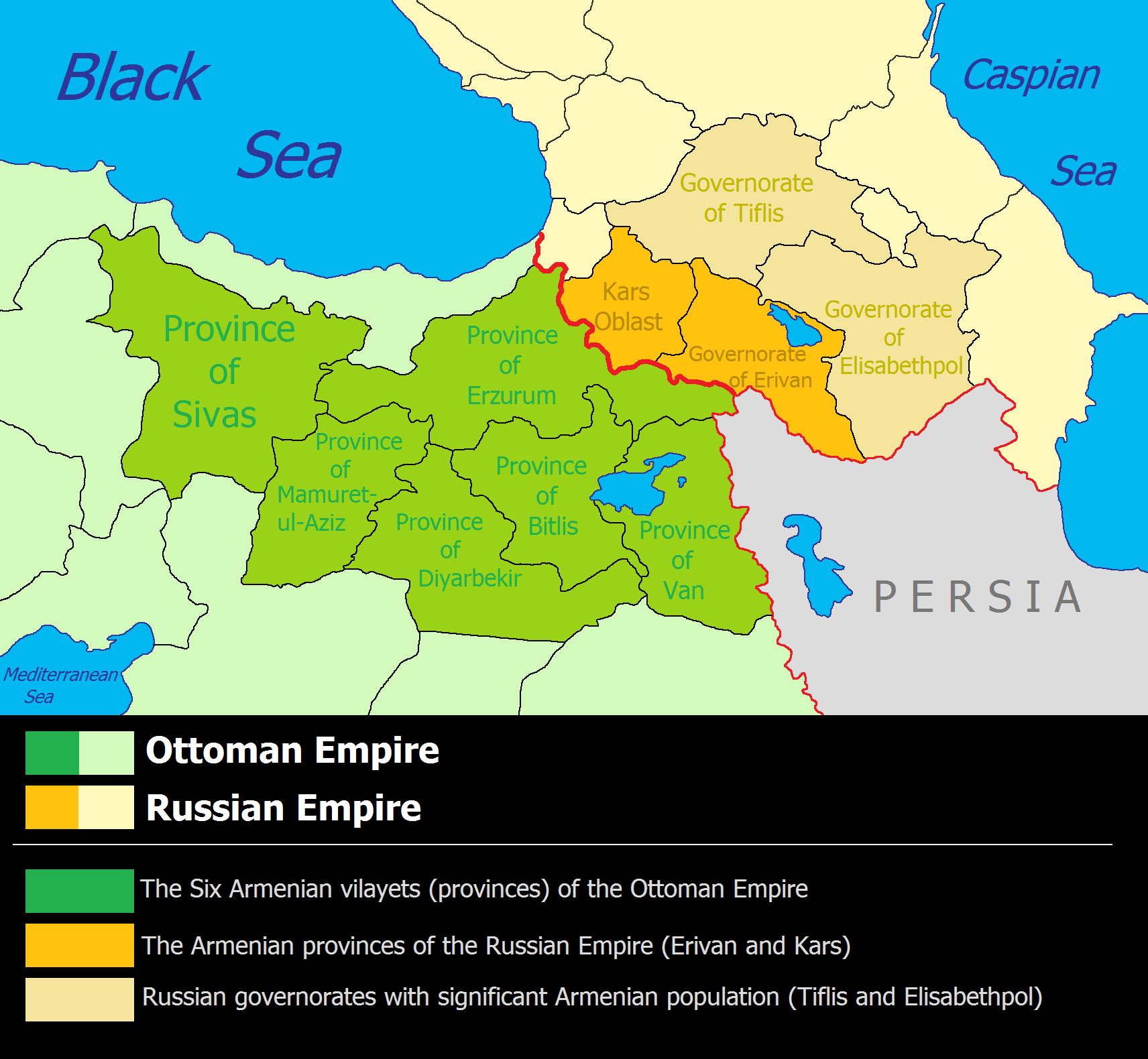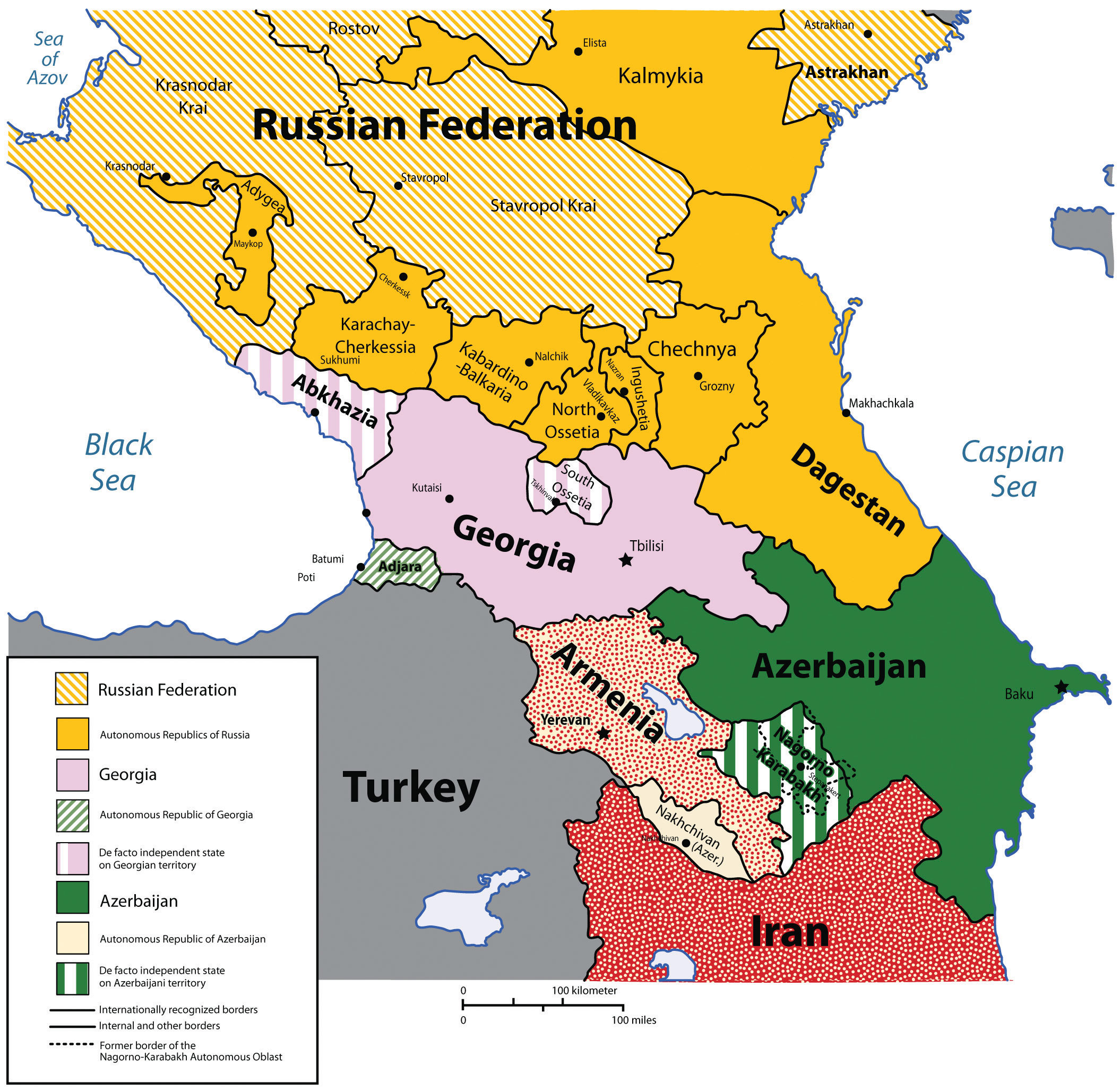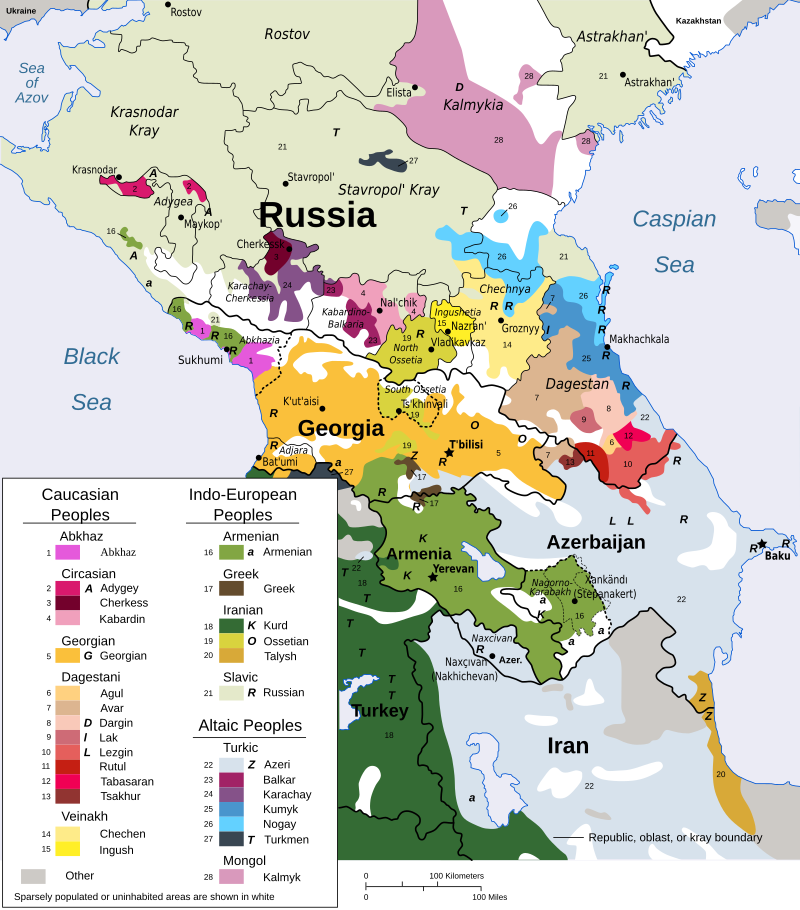Caucasian War
Russian Empire's conquest of the Caucasus lasted approximately 101 years. The
Caucasian War (1817–1864) was an invasion of the Caucasus by the Russian Empire which resulted in Russia's annexation of the areas of the North Caucasus, and the ethnic cleansing of Circassians. It consisted of a series of military actions waged by Russia against territories and tribal groups in Caucasia.
Caucasian War (Wikipedia) >
Russian control of the Georgian Military Highway in the center divided the
Caucasian War into the
Russo-Circassian War in the west and the
Murid War in the east.
Russo-Circassian War
In the western or Russo-Circassian War the tribes did not unite and the war was very complex.
Articles
Murid War
In the east. the tribes joined in the Caucasian Imamate, a military-theocratic state which held out for thirty years.
Murid War (Wikipedia) >
Russo-Persian Wars
Other territories of the Caucasus were incorporated into the Russian empire at various times in the 19th century as a result of Russian wars with Persia.
Russo-Persian Wars (Wikipedia) >
Russo-Turkish Wars
Russo-Turkish Wars (Wikipedia) >
Circassian Diaspora
Circassia refers to a region the majority of whose inhabitants before 1860s were the Adygey (Adyghey, Adyghe) ethnic group, known to the West as Circassian.
The Unrepresented Nations and Peoples Organization estimates that there are as many as 3.7 million "ethnic Circassians" in the diaspora outside the Circassian republics (meaning that only one in seven "ethnic Circassians" lives in the homeland).
 |
| Circassia |
1821–1822 and 1863–1864
The Caucasian War ended with the signing of loyalty oaths by Circassian leaders on 2 June 1864. Thereupon, Russia undertook the expulsion of the entire indigenous Circassian population, herding them to Black Sea ports for deportation to neighboring Anatolia.
Over the course of hundreds of raids the Russians drove the Circassians from their homeland and deported them to the Ottoman Empire. At least 600,000 people lost their lives to massacre, starvation, and the elements while hundreds of thousands more were forced to leave their homeland. By 1864, three-fourths of the population was annihilated, and the Circassians had become one of the first stateless peoples in modern history.
Articles
Armenia and the Armenian Genocide
Armenia
In the first century BC the Kingdom of Armenia reached its height under Tigranes the Great. Armenia became the first state in the world to adopt Christianity as its official religion. Armenians have their own unique alphabet, which was invented by Mesrop Mashtots in 405 AD.
Between the 16th and first half of the 19th century, the traditional Armenian homeland which stretched in to much of western Anatolia came under rule of the rivaling Ottoman and successive Iranian Empires, passing between the two over the centuries. By the mid 19th century, Eastern Armenia had been conquered by Russia from Qajar Iran, while most of the western parts of the traditional Armenian homeland still remained under Ottoman rule.
Armenian Genocide
The Destruction of the Ottoman Armenian population took place during and after World War I and was implemented in two phases: the wholesale killing of the able-bodied male population through massacre and forced labor, and the deportation of women, children, the elderly and infirm on death marches to the Syrian Desert.[The total number of people killed as a result has been estimated to range from 600,000 to 1,500,000.
Current Population Shifts
Following the wider patterns of most states emerging from the collapse of the Soviet Union, the three main countries in this region (Armenia, Azerbaijan and Georgia) saw patterns of mass emigration in the 1990s. Ethnic tensions and the constant escalation of conflicts in the region has created numerous groups of Internally Displaced Persons (IDPs) and refugees.
Recommended Book
Atlas of the Ethno-Political History of the Caucasus Hardcover by Arthur Tsutsiev

















